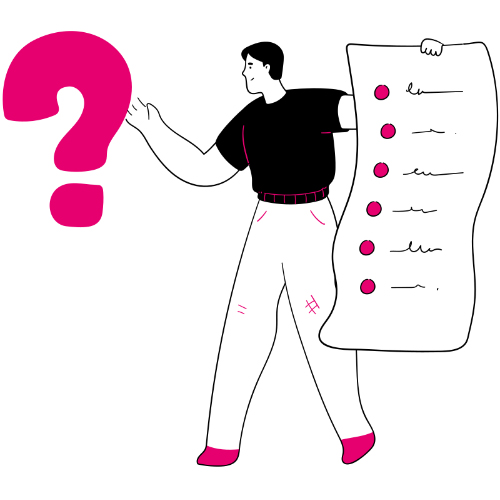Captioning for Broadcast TV: Who is Responsible?
Captioning Best Practices for Media & Entertainment [Free eBook]
Since 2016, the Federal Communications Commission (FCC) has placed the responsibility of captioning for broadcast TV on both video programming distributors (VPDs) and video programmers. The aim of this closed captioning responsibility is to simplify workflows while also making the resolution of issues associated with a television program’s captions a much more efficient process. Let’s take a closer look at how the captioning responsibilities are divided and what kind of video content applies.
Divided Responsibility for Captioning on Broadcast Television
According to the FCC, video programmers are responsible for providing high-quality closed captions, and VPDs are responsible for ensuring closed captions make it to broadcast. Here’s a quick breakdown of duties:
| Video Programmers | Video Programming Distributors |
| Ensuring compliance with FCC closed captioning quality requirements | Passing through (or processing) captions |
| Providing closed captioning on all non-exempt programming | Ensuring maintenance and delivery of captions |
Captioning certification (delivered directly to FCC):
|
|
| Providing contact information for the individual(s) responsible for captioning compliance directly to the FCC |
Who is considered a video programmer and who is considered a VPD?
The FCC defines video programmers and video program distributors (VPDs) as such:
Video Programmers
A provider of video programming intended for distribution to residential households. Includes but is not limited to broadcast or non-broadcast TV networks and owners of such programming.
Video Program Distributors (VPDs)
A television broadcast station licensed by the Commission, a multichannel video programming distributor, or any other distributor of video programming meant for residential households.
Addressing Complaints
When it comes to addressing any consumer complaints regarding closed captioning on a broadcast television program, the FCC also splits this responsibility between VPDs and video programmers.
- VPDs must conduct an initial investigation into captioning complaints and respond to any complaints associated with distribution.
- Video programmers are responsible for addressing complaints associated with caption creation, quality, or delivery to VPD.
Compliance Ladder
The FCC has what they refer to as a “compliance ladder” for caption quality to encourage video programmers to quickly resolve quality issues as well as monitor any patterns of non-compliance.
This compliance ladder allows VPDs and video programmers the opportunity to address caption quality issues initially; however, the FCC has the right to bypass the ladder and enforce caption quality compliance if they determine that the circumstances warrant direct action.
The ultimate guide to closed captioning for broadcast TV and streaming 📺
What Video Content Applies to the FCC’s Rules?
The FCC implicates all video content covered by the CVAA and other FCC requirements, including:
- Broadcast television content
- IP-delivered video content that previously appeared on television with captions
- Straight lift video clips from full-length programming that previously appeared on television with captions
- Montage clips from full-length programming that previously appeared on television with captions
For video content not outlined in these requirements, it’s still important to remember that other legal precedents exist for online video content and that proposed laws like the CVTA may impact these rules at some point. Learn about how you can future-proof your broadcast TV content by staying up to date with the latest accessibility news.
The CVAA & the Legal Responsibility for Video Programmers & Distributors
The 21st Century Communications and Video Accessibility Act (CVAA) states that all online video previously aired on television is required to have closed captioning, including clips and montages. If your video content has never aired on television, this act does not apply to you (but other laws, like the ADA, might.)
Online Captions
- All prerecorded video programming shown on television with captions must have captions when published online.
- Live and near-live programs shown on TV with captions must have captions when republished online.
- Video clips and montages of any length, edited or unedited, that aired on TV must be captioned when published online.
- For clips of live programming, captions must be up within 12 hours.
- For clips of near-live programming, captions must be up within 8 hours.
Video Players
Video distributors must use video programming apparatuses, or media players, that allow users to toggle captions on and off, select language for subtitles, and customize the display of the captions. Video programming distributors must comply with CTA-708 standards for customizing caption displays.
Note this does not apply to mobile devices, smartphones, game consoles, cellular telephones, and tablets.
The Communications, Video, and Technology Accessibility Act (CVTA) Could Affect Responsibilities
While it’s too soon to tell exactly how the proposed CVTA could shake up accessibility responsibilities for broadcast television producers and distributors, it will impact the requirements and current exemptions to the CVAA’s requirements in the following ways:
- FCC closed captioning quality standards will be updated to include content that is broadcasted via the internet or streaming–not just television.
- The FCC will update quality standards every four years to “update its regulations pertaining to the quality of closed captions as necessary to reflect technological and methodological advances, to the extent deployment of such advances will improve the quality of closed captions.”
- The FCC shall “take any action, including enforcement, necessary to ensure compliance with its regulations pertaining to the quality of closed captions,” meaning that the FCC will be empowered to enforce captioning quality standards as they see fit.
- The FCC will be asked to submit a report to the Committee on Commerce, Science, and Transportation of the Senate and the Committee on Energy and Commerce of the House of Representatives every two years regarding complaints, subsequent actions taken, and length of time taken to resolve issues surrounding accessibility.
There are no official timelines or specifics in place for the CVTA’s proposed changes, but as the legislation evolves, it will be critical for video programmers and VPDs to keep an eye on the quality of their captioning for broadcast TV and any online video content.
High-quality captions = high-quality broadcast TV programming
By placing captioning responsibility on video programmers and distributors, the FCC rules help to ensure that providing high-quality captions for video content remains a priority for television broadcasters and producers. This prioritization has led to a noticeable improvement in the quality of captioning for broadcast TV over the past several years, which not only serves the D/deaf and hard of hearing audience, but the 80% of viewers using captions for other reasons.
Because the continuous improvement of captioning quality can be a moving target for busy broadcast TV producers, we at 3Play Media build compliance and quality into our captioning services from the very start. Even as captioning requirements change over time, 3Play can help video programmers and distributors rest easy knowing that their closed captions and live captions for broadcast TV are truly future-proof.
This blog was originally published by Patrick Loftus as “FCC’s New Closed Captioning Rules Go Into Effect September 22” on February 9, 2016, and has since been updated again for accuracy, clarity, and freshness.
This blog post is written for educational and general information purposes only and does not constitute specific legal advice. This blog should not be used as a substitute for competent legal advice from a licensed professional attorney in your state.









